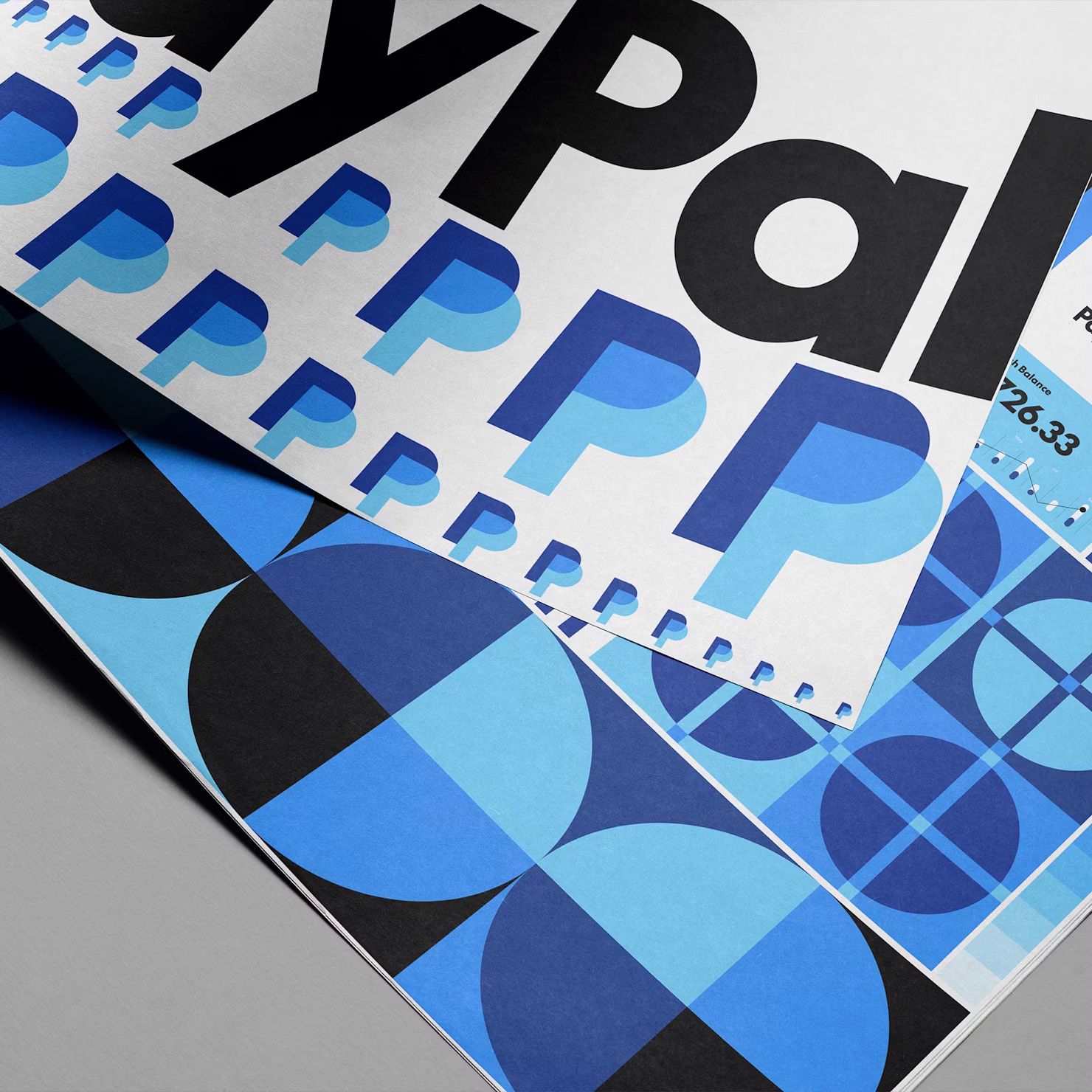Lessons and Takeaways from the 2024 PayPal Brand Refresh
A brand refresh can be an essential strategy for technology companies aiming to stay competitive and relevant, as demonstrated by PayPal’s recent visual identity update. This move underscores a key principle that we embrace at our agency: differentiating through color while remaining aware of market dynamics and customer expectations.
The power of color in a competitive market
In PayPal’s case, their bold shift from the traditional blue to black for the wordmark signals more than just a cosmetic change; it reflects a strategic repositioning. Blue, a color long associated with trust and stability, is widely used in the financial technology sector. However, with so many companies adopting similar hues, there’s a risk of blending in rather than standing out. By moving to black—a color often linked to sophistication, power, and modernity—PayPal is signaling a new chapter that emphasizes confidence and leadership in the digital payment space. This decision aligns with the best practice of conducting thorough competitive analysis when planning a brand refresh.
As part of our methodology, Speak! analyzes the color palettes of competitors and adjacent market players before embarking on a visual identity update. It’s not just about picking a color that “looks good,” but about choosing one that resonates with your target audience while setting you apart from others in the industry. For technology brands, this might mean stepping away from traditional tech blues and greens and exploring more daring colors that speak to innovation, creativity, or customer-centricity.
It's worth noting that you'll still see plenty of blue used in the PayPay identity system, according to Pentagram:
"The colors have been calibrated for continuous contrast, to create a sense of depth and dimension in the layers of the logo that were not previously there. Bright blue and deep blue overlap to reveal Venmo blue, a nod to the growing mobile app owned by PayPal."

Application of PayPal’s color palette. Image: Pentagram
Beyond color: what makes a brand refresh successful?
Color alone isn’t enough, of course. PayPal’s refresh involved subtle refinements to the wordmark and logo, signaling an evolution rather than a complete overhaul. This is a key lesson in maintaining brand equity while modernizing. A successful brand refresh often involves walking the line between familiarity and innovation. Your customers should still recognize your brand but feel like it's evolved in ways that better meet their current needs and aspirations.
Best practices for a successful refresh include:
1. Start with strategy, Not Design: Before making any visual changes, brands must understand why they are refreshing their identity. Is it to appeal to a new demographic? Signal a change in business direction? Enhance digital legibility? A clear strategy should guide every creative decision.
2. Listen to your audience: Brands that excel in refreshes often tap into consumer insights. How do your users perceive your brand today? What emotions or values do you want your new visual identity to evoke? Aligning design with the feelings and experiences of your customers can significantly enhance brand loyalty.
3. Keep it simple: Overly complex logos and intricate design elements can become dated quickly. Simplicity, on the other hand, tends to have staying power. A streamlined visual identity is not only easier for customers to remember, but it also works better across digital platforms—whether on a mobile app, website, or social media.
4. Test for flexibility: A modern visual identity must be adaptable. Technology brands, in particular, need logos and colors that are versatile across various formats and channels. From websites and app icons to wearables and product packaging, your visual identity needs to be robust enough to work in different sizes, textures, and environments.
5. Create a comprehensive system: Successful brands don’t just change their logo — they create a comprehensive visual system that includes typography, iconography, imagery, and even sound. These elements work together to convey a consistent message. In PayPal’s case, the brand refresh included a refined wordmark and logo, ensuring that all elements of their identity work harmoniously.

The evolution of PayPal’s logo. Image: PayPal
Learning from PayPal: The role of visual identity in brand evolution
Technology companies, especially those in fast-evolving sectors like fintech, often find themselves needing to update their visual identity to stay current. PayPal’s shift reflects their intention to evolve with the times and maintain their leadership in an increasingly crowded space. This balance of continuity and change is critical for long-established brands that want to remain relevant without alienating loyal customers.
When considering a brand refresh, especially for technology companies, we advise looking at broader cultural shifts and industry trends. Technology moves fast, and brands need to evolve at the same pace. However, visual identity changes shouldn’t be driven solely by trends; they must align with the long-term vision and mission of the company.
One of the most compelling aspects of PayPal’s refresh is how it signals change while retaining brand equity. The refreshed logo isn’t drastically different from its predecessor, ensuring that the brand remains instantly recognizable. This speaks to a broader best practice: evolution, not revolution. Unless there’s a dramatic shift in your business model or offering, subtle, thoughtful changes often have the most impact. Customers appreciate brands that evolve with them, but too much change at once can feel jarring or inauthentic.
The value of a thoughtful brand refresh
PayPal’s brand refresh exemplifies the power of visual identity updates done right. By analyzing competitive trends and using color strategically, PayPal managed to distinguish itself while maintaining its core identity. For technology brands, the lessons here are clear: invest time in understanding your market, listen to your customers, and create a visual identity system that not only reflects who you are today but will continue to resonate in the future.
At Speak!, we champion this approach — carefully balancing creativity with strategy to ensure that a brand refresh not only makes a company look good but also supports its business goals. As a creative and brand agency for technology companies, we believe by focusing on differentiation, simplicity, and flexibility, tech brands can use visual identity to strengthen emotional connections with their audience, leading to greater loyalty and long-term success.




